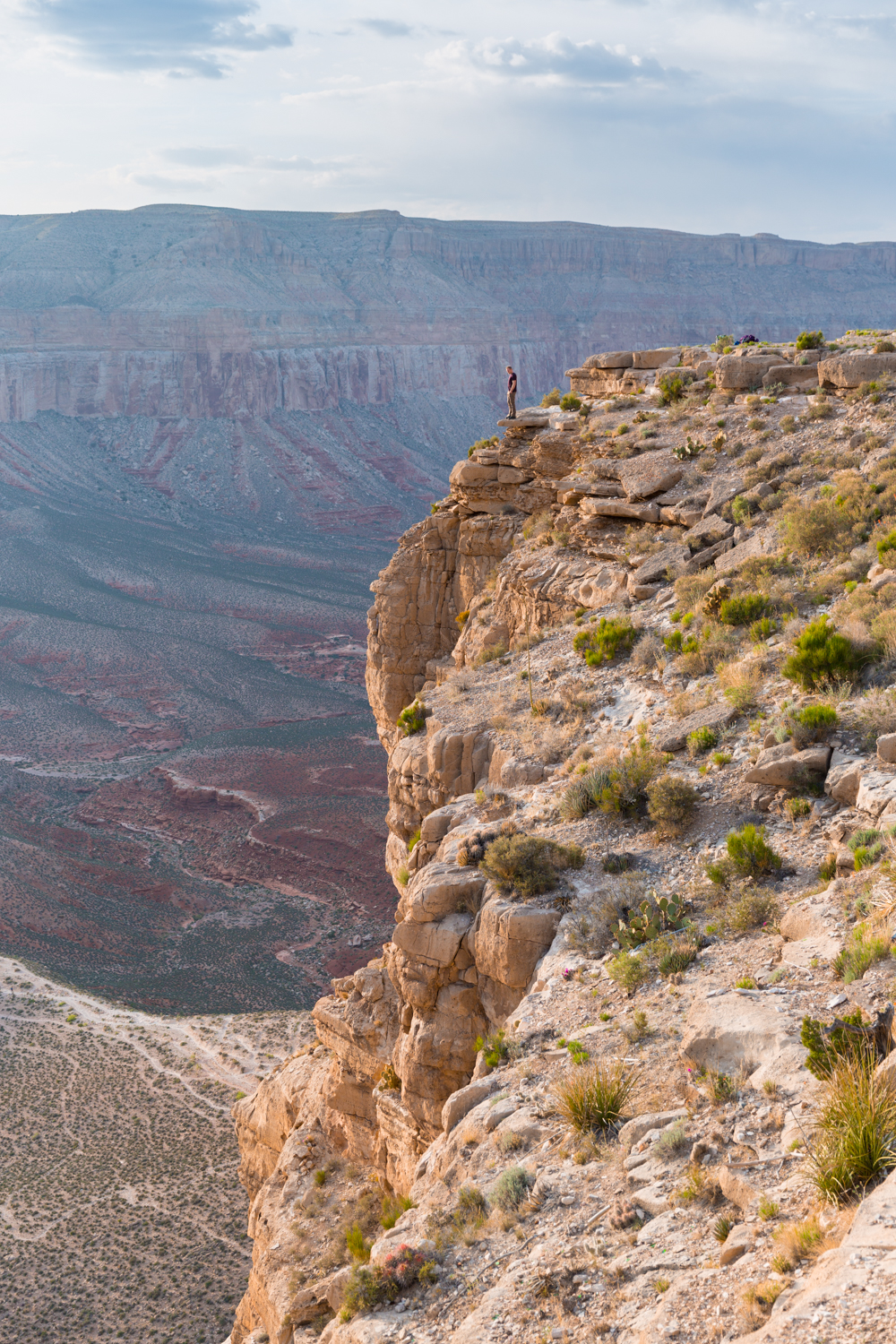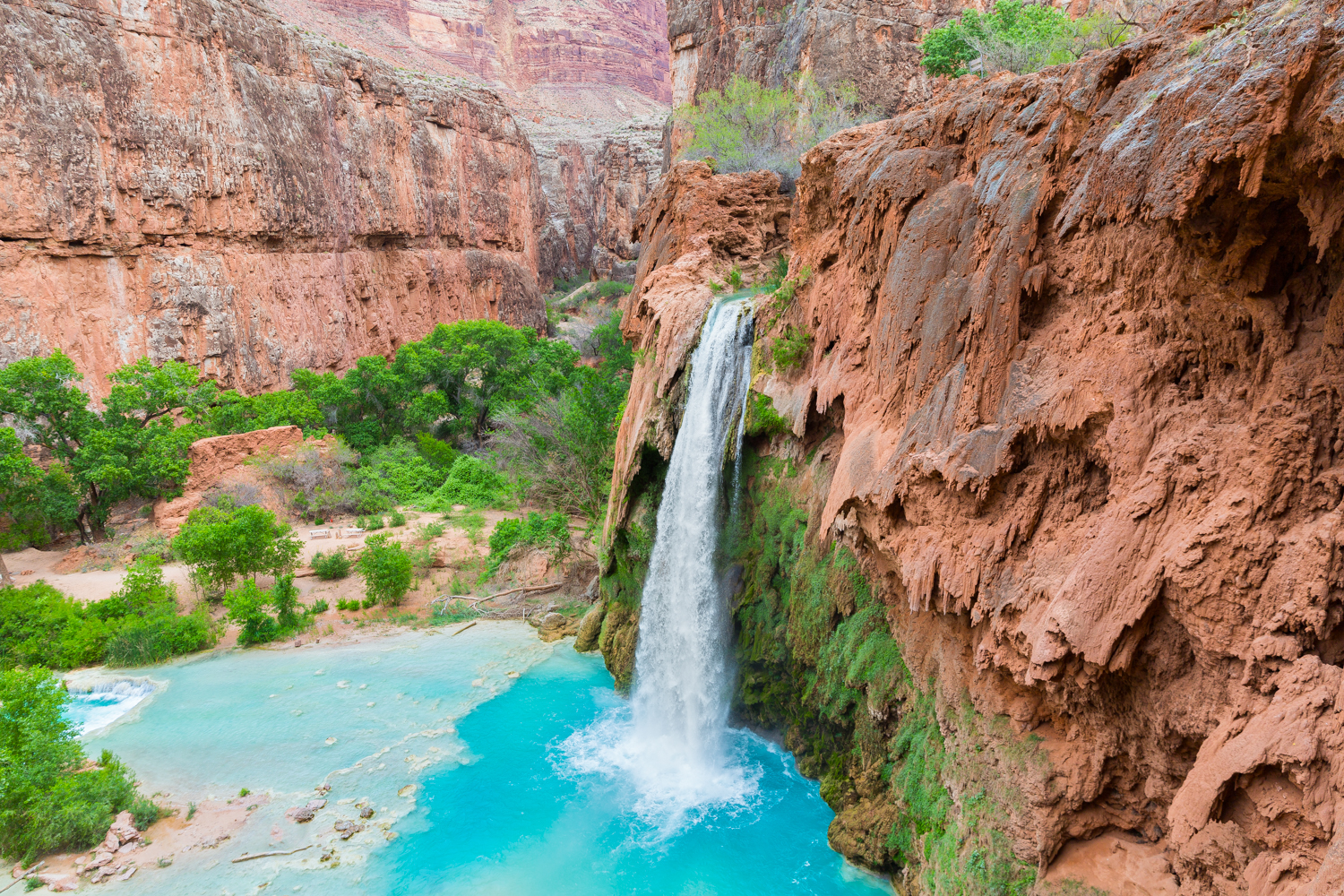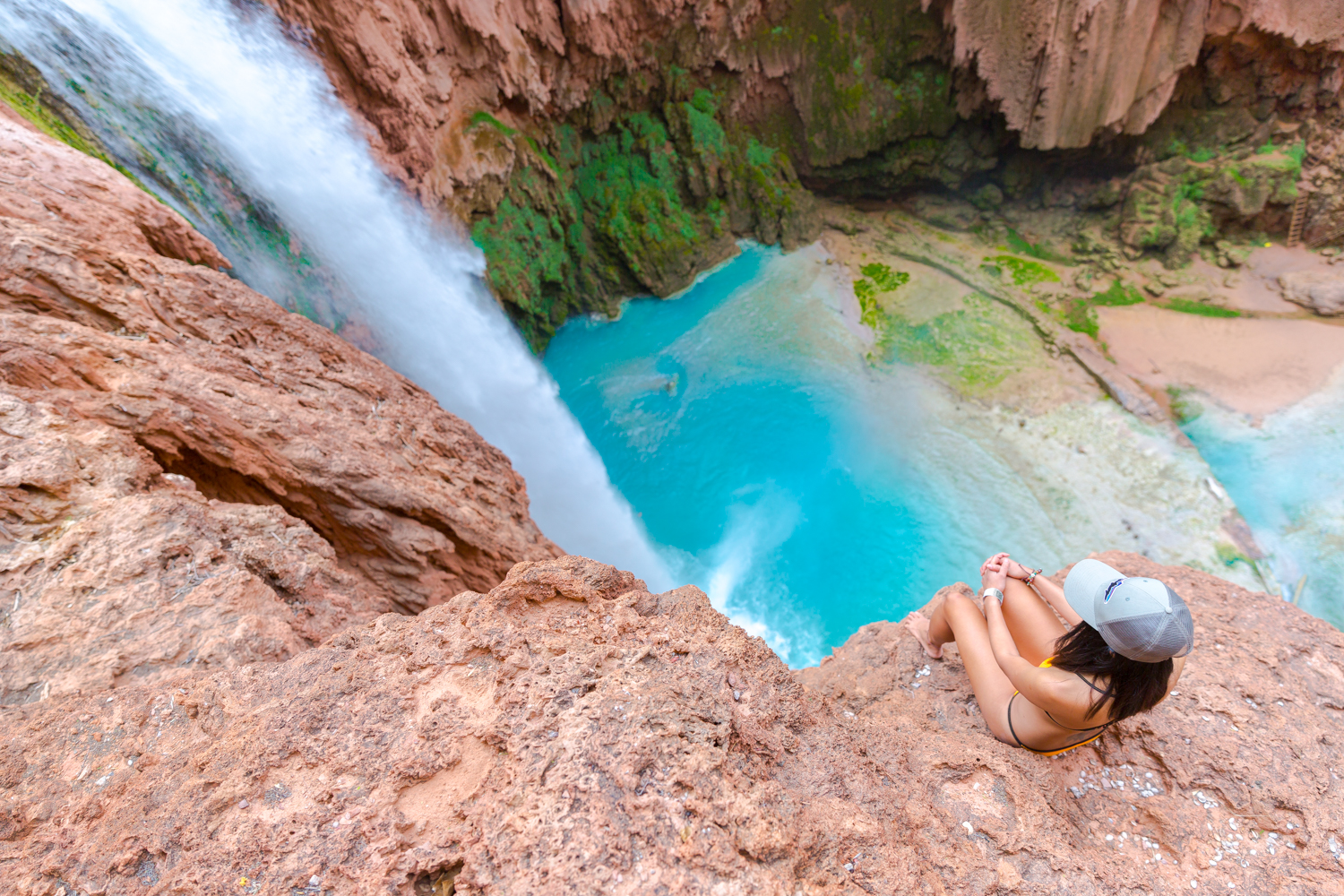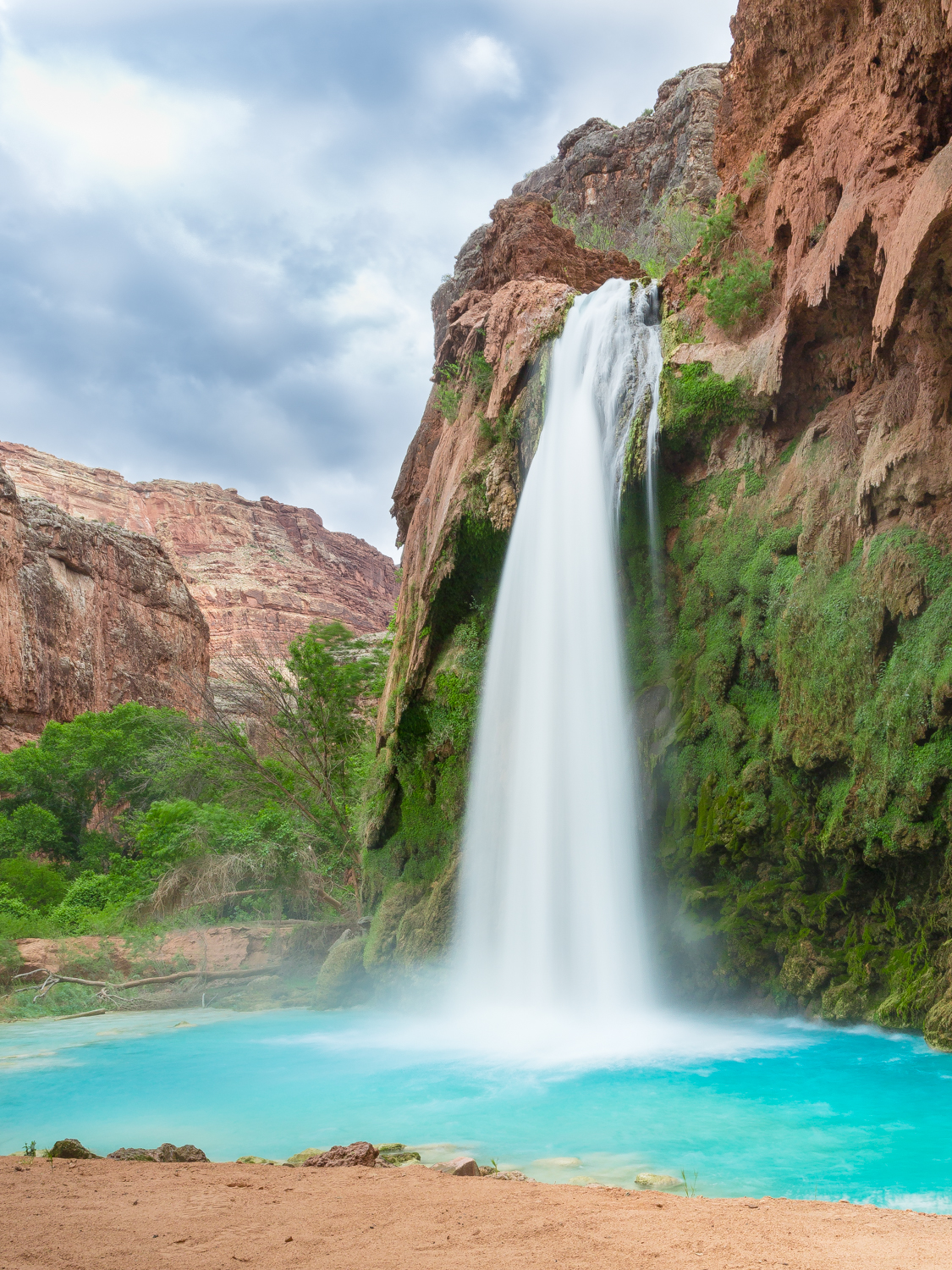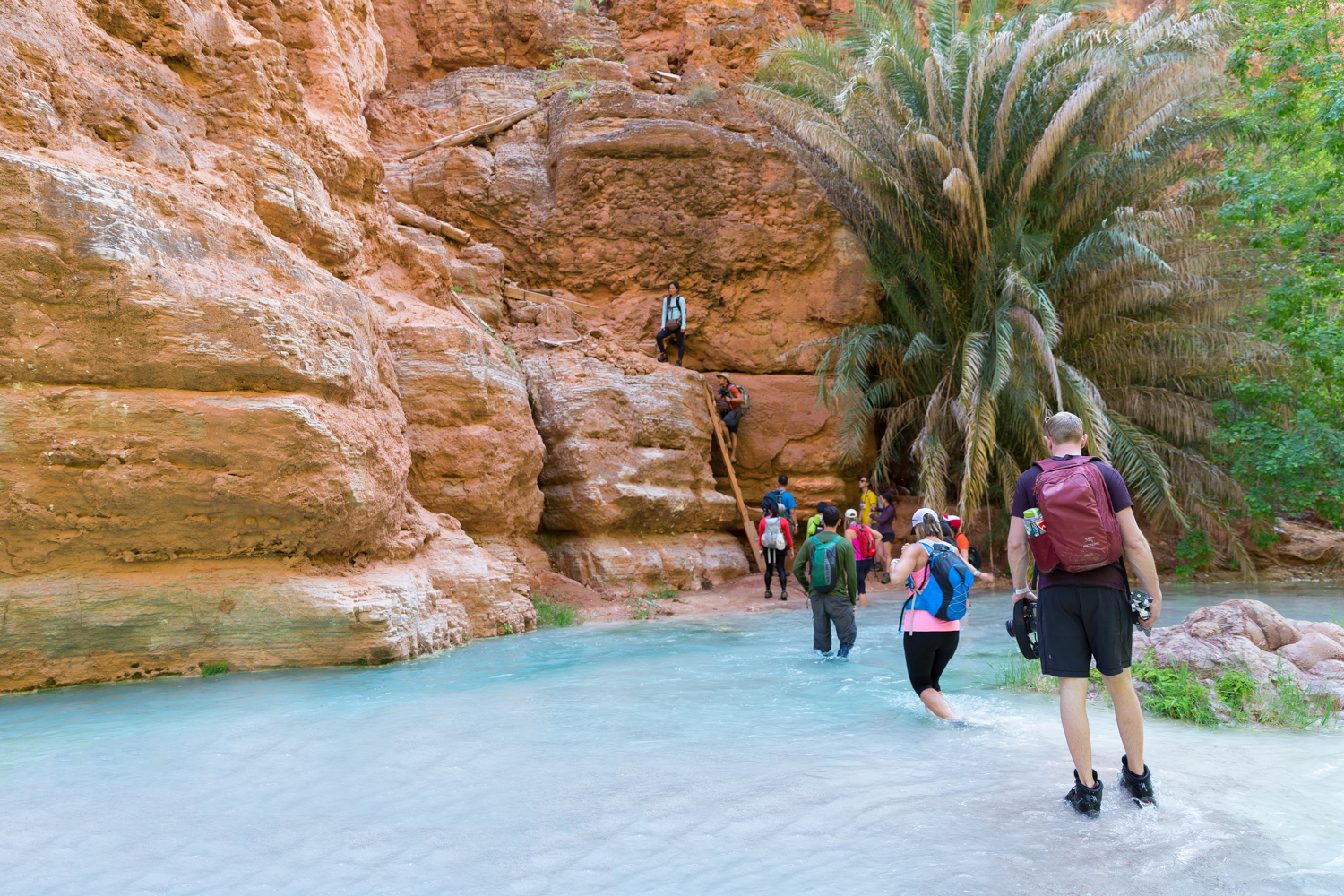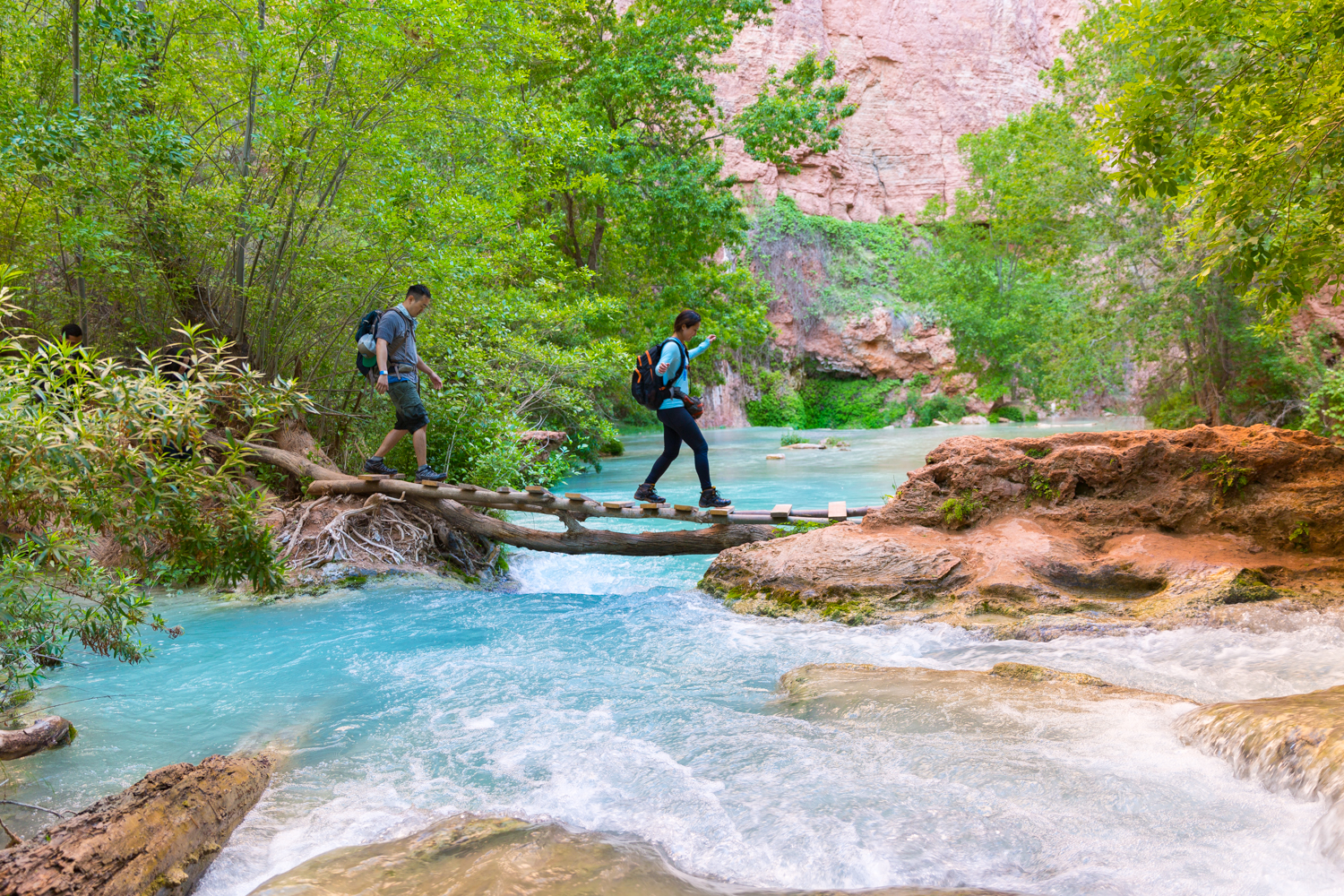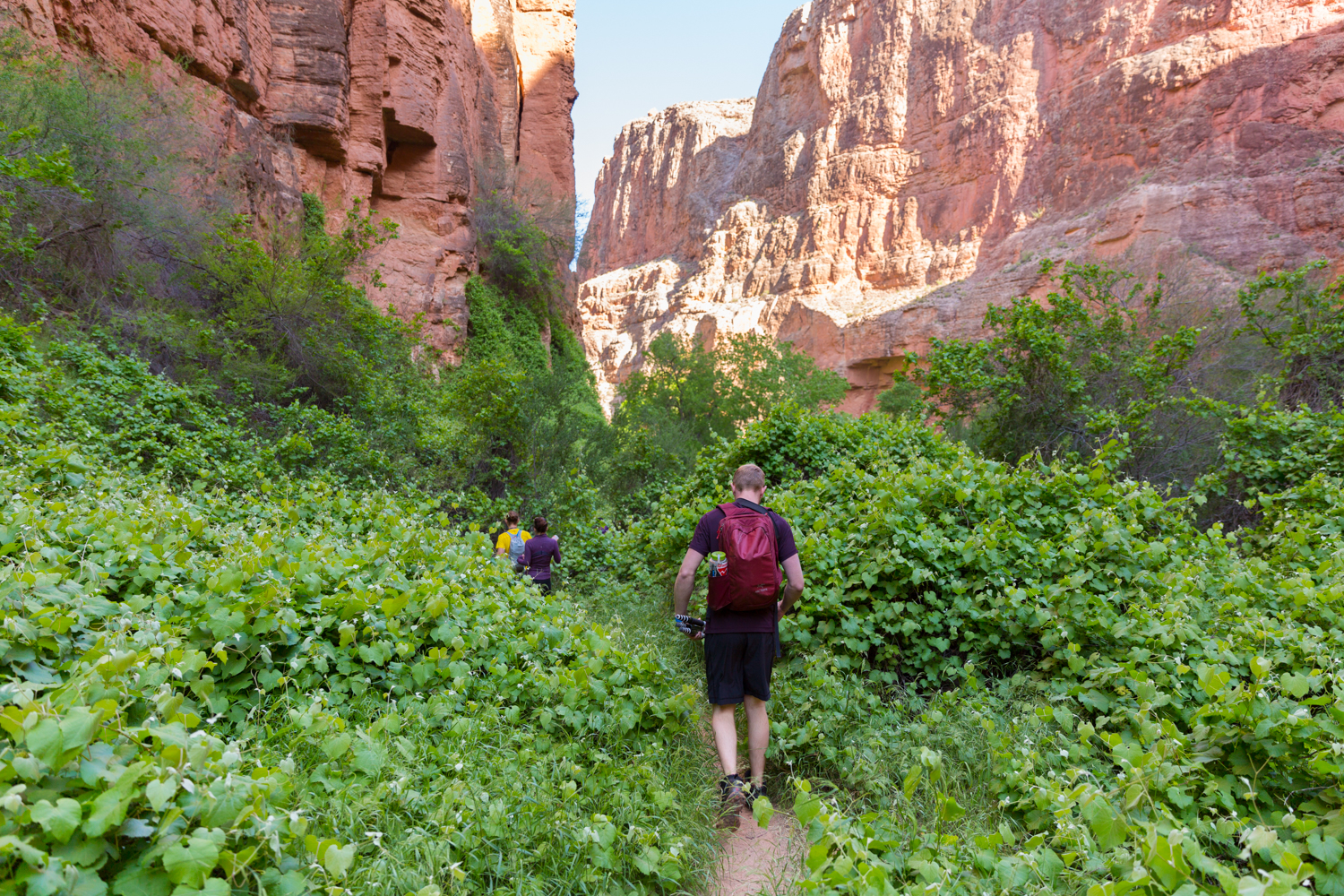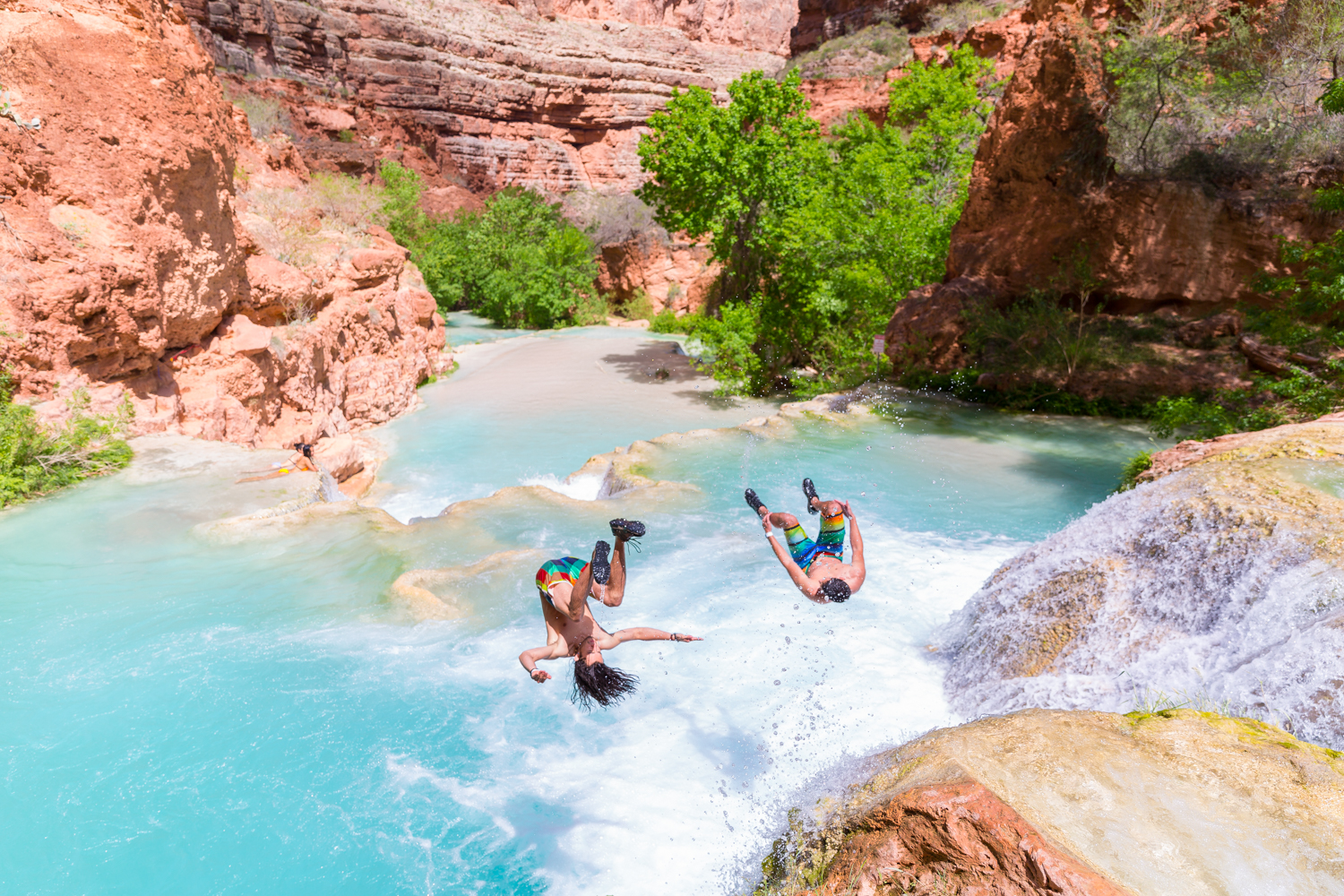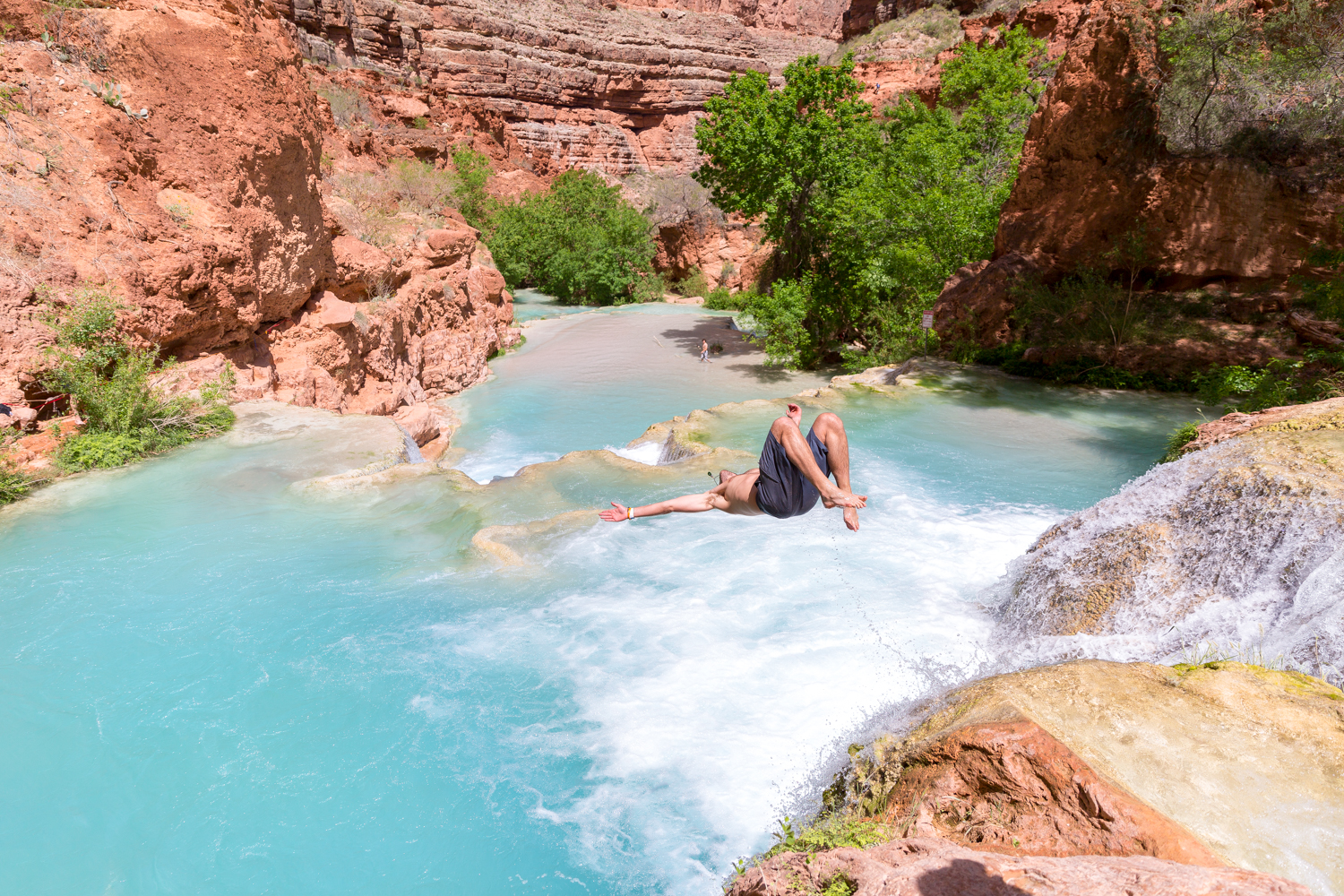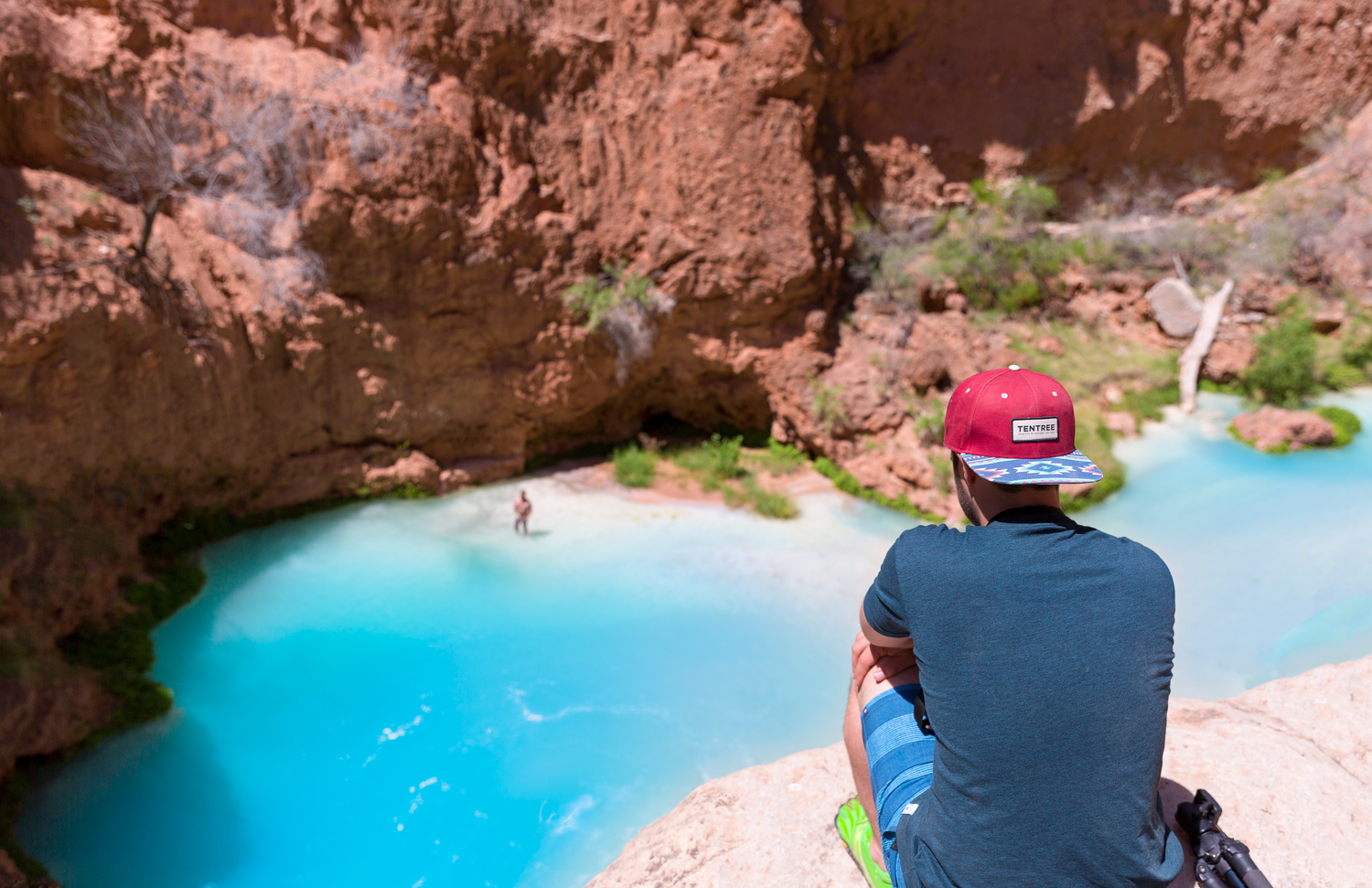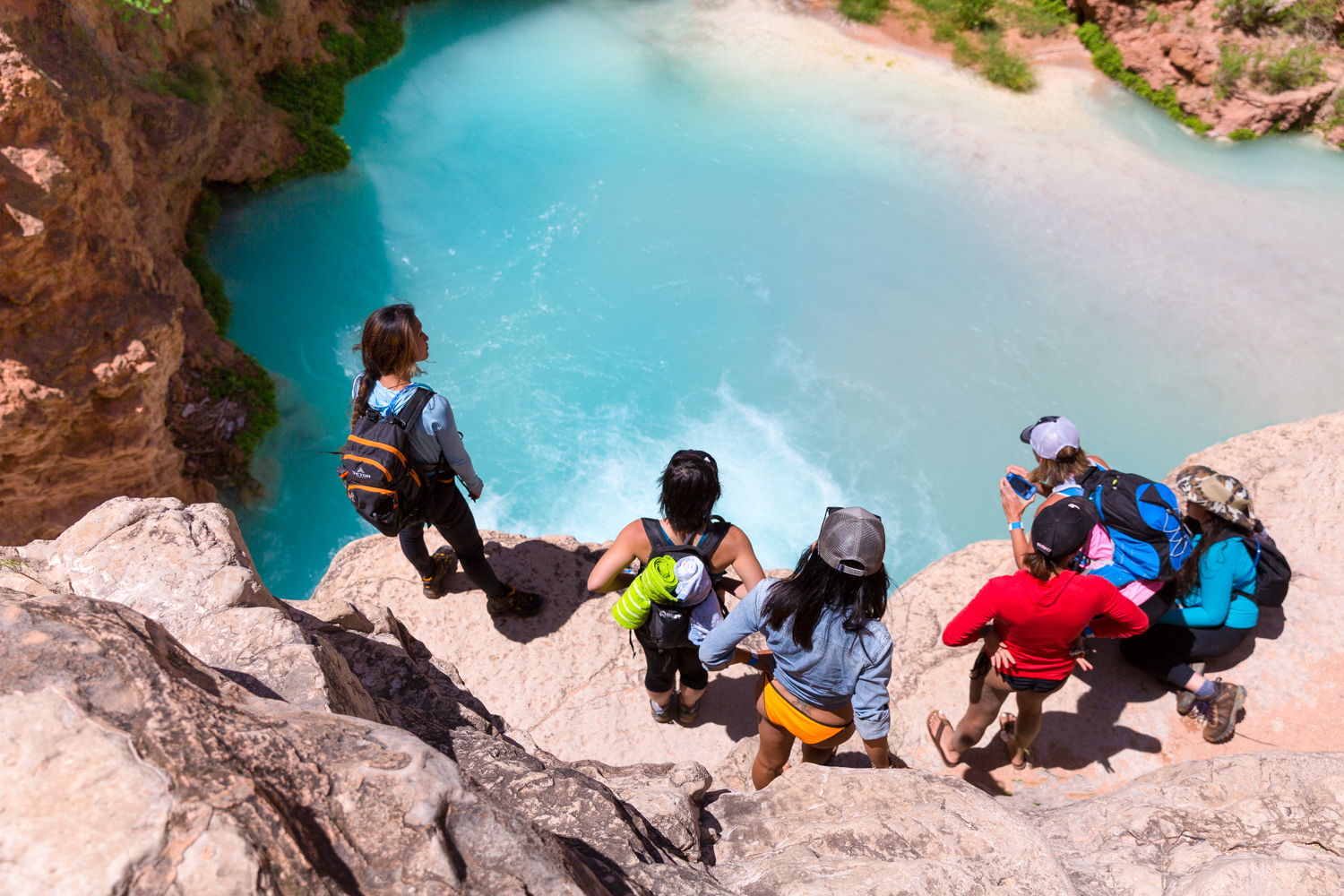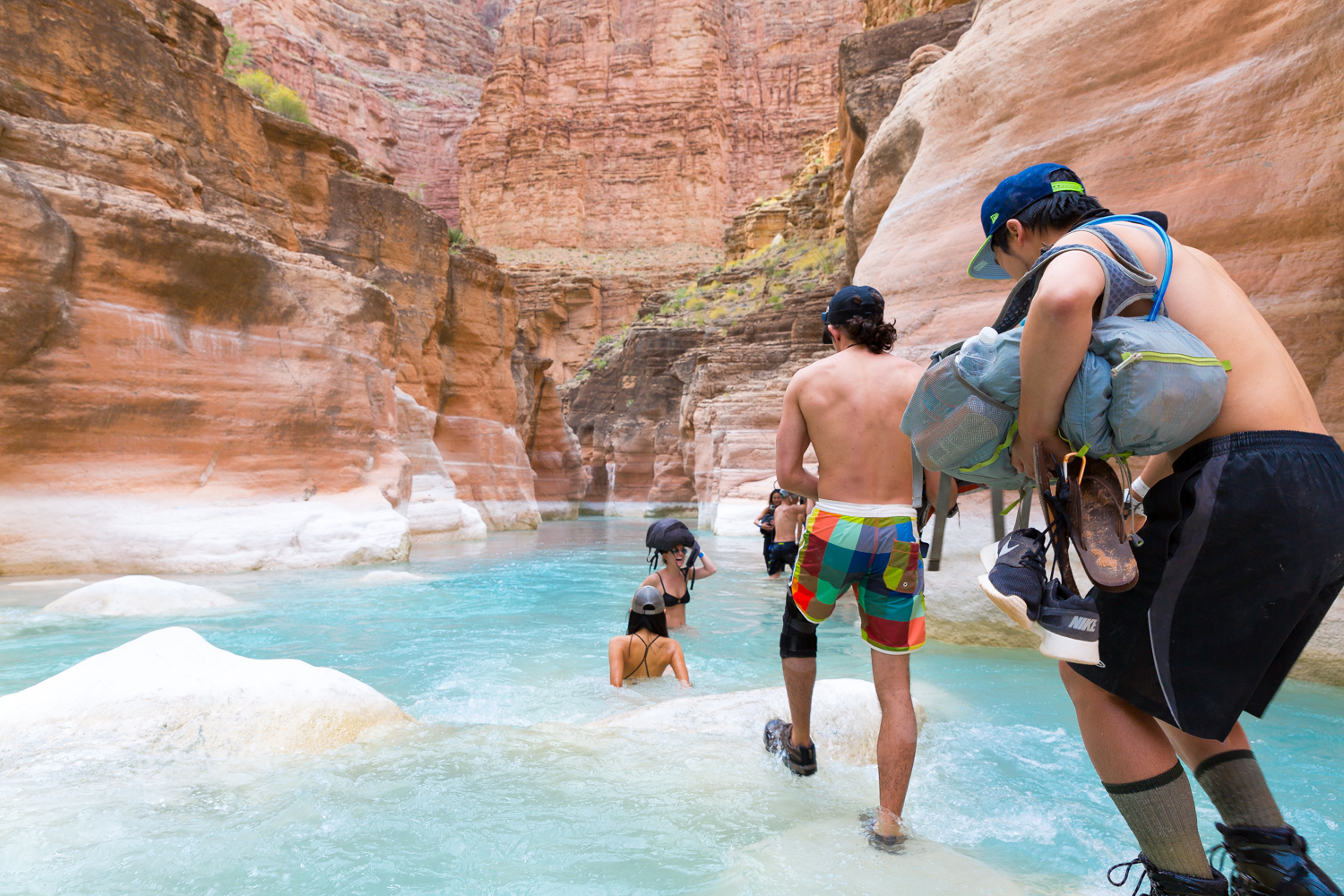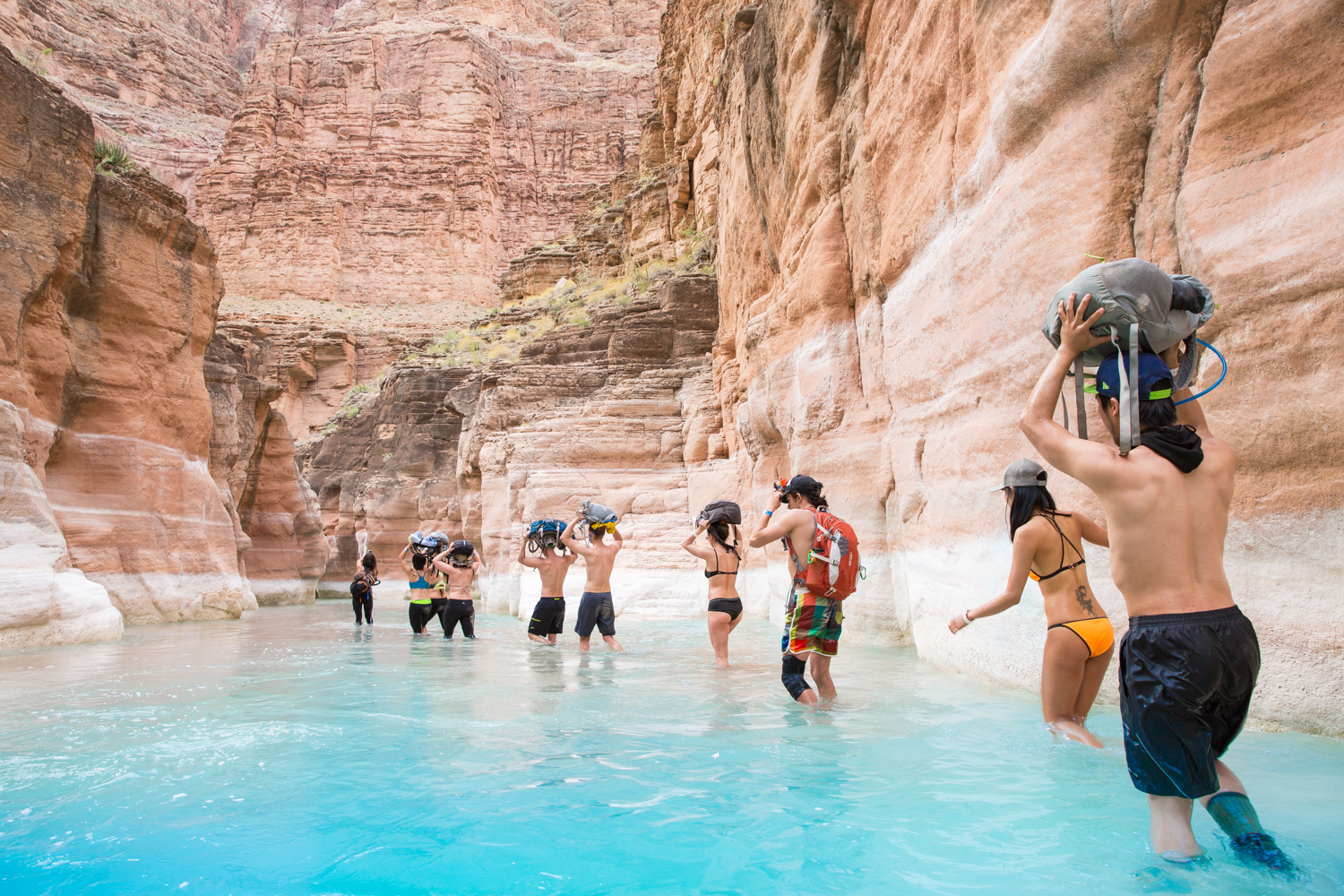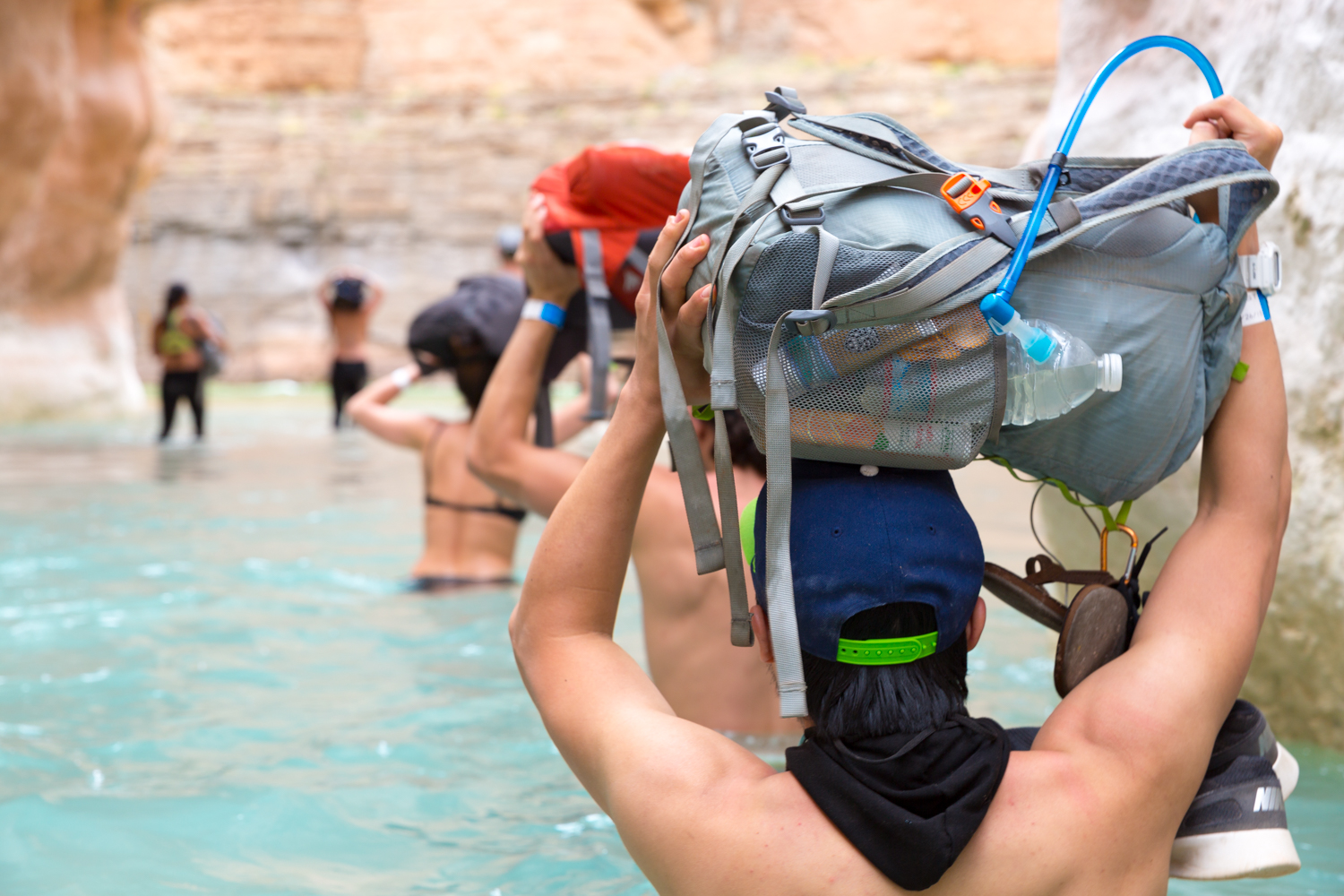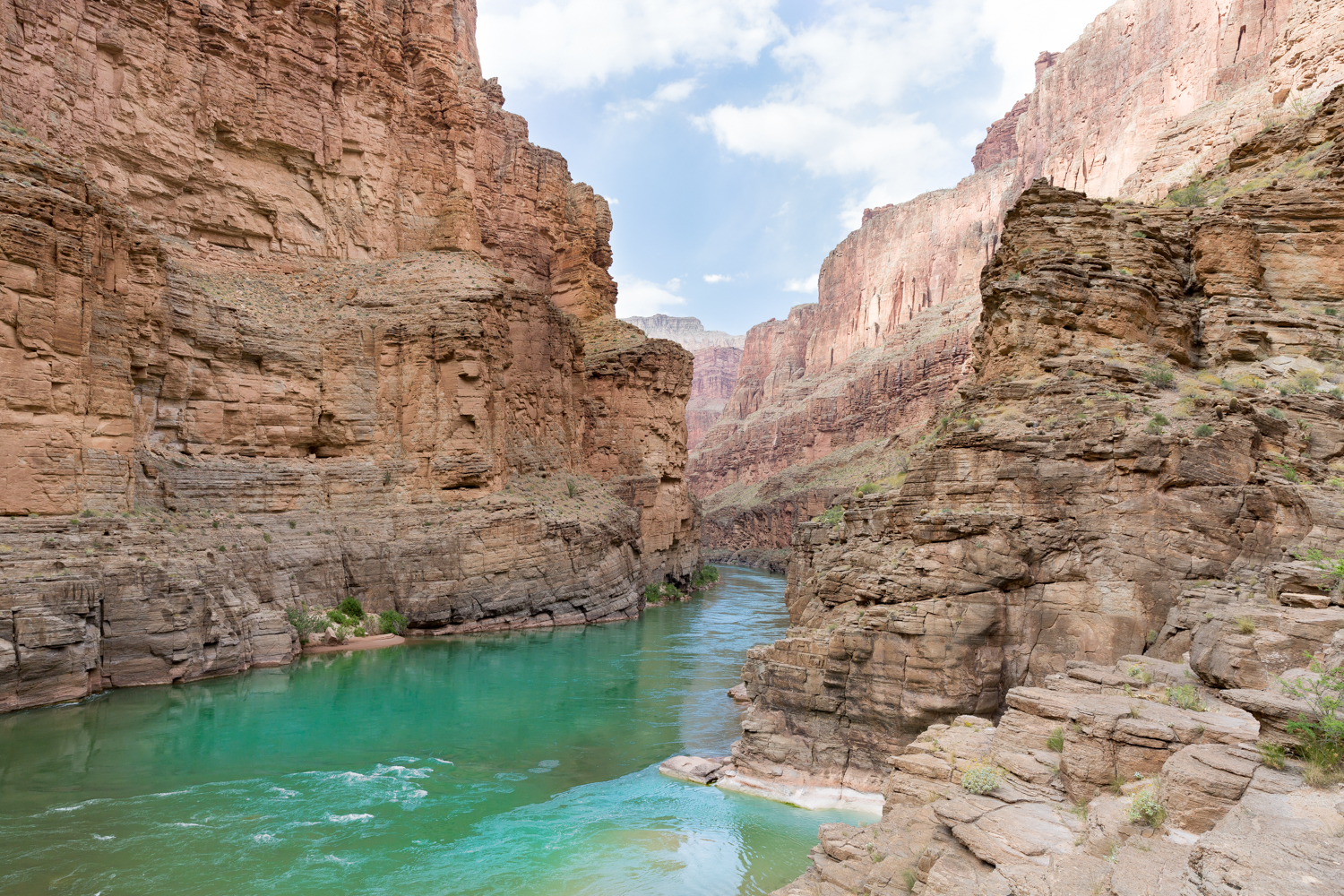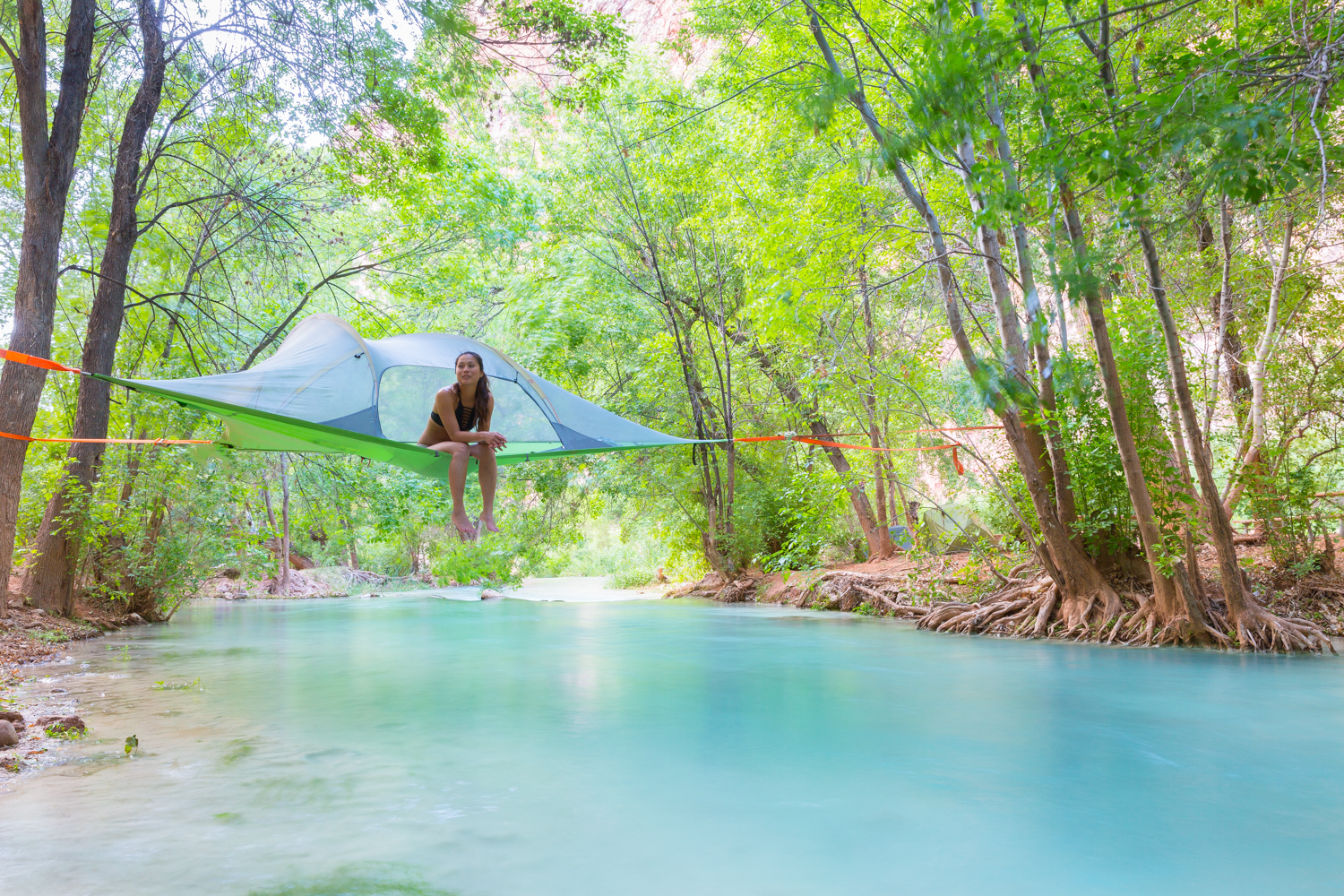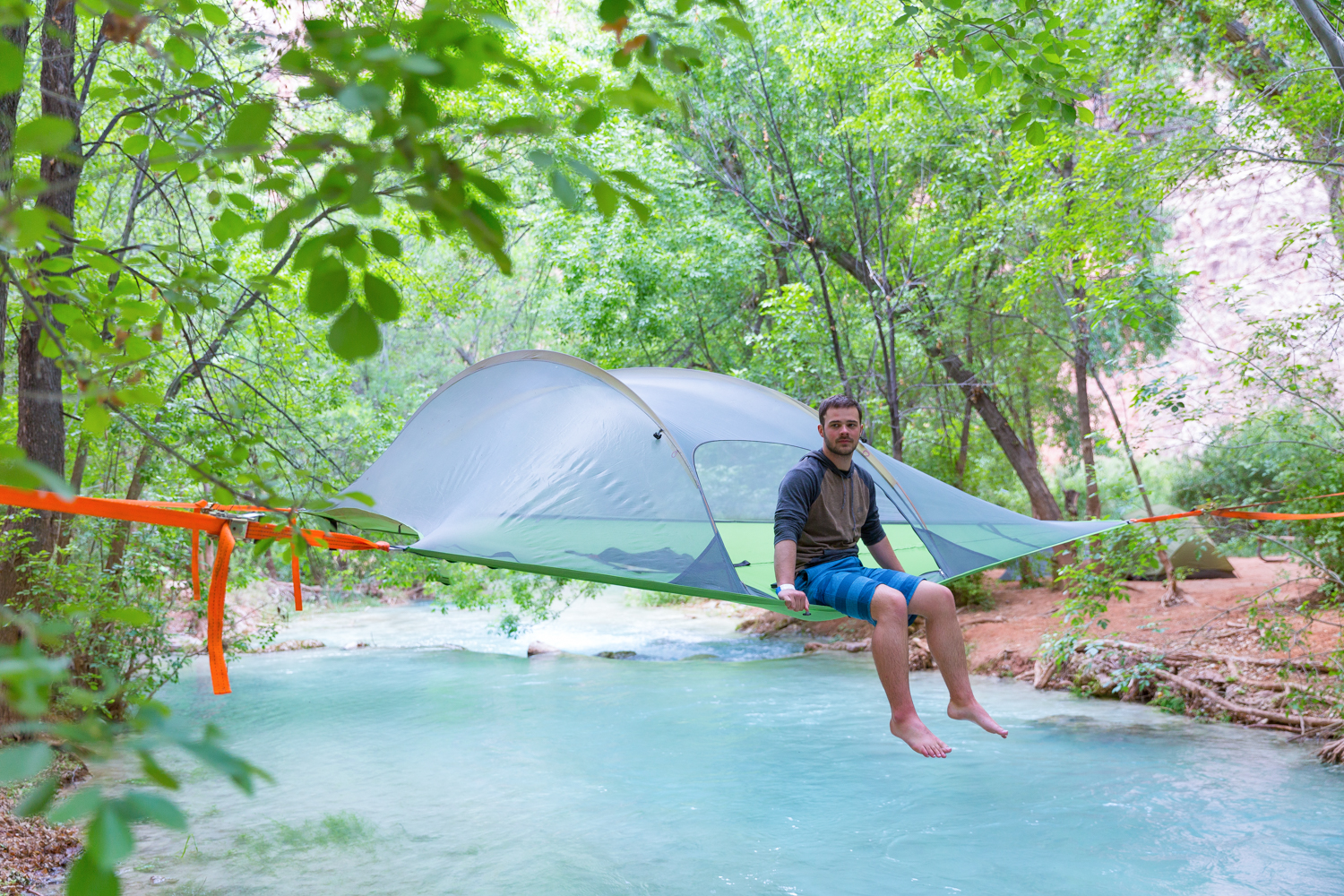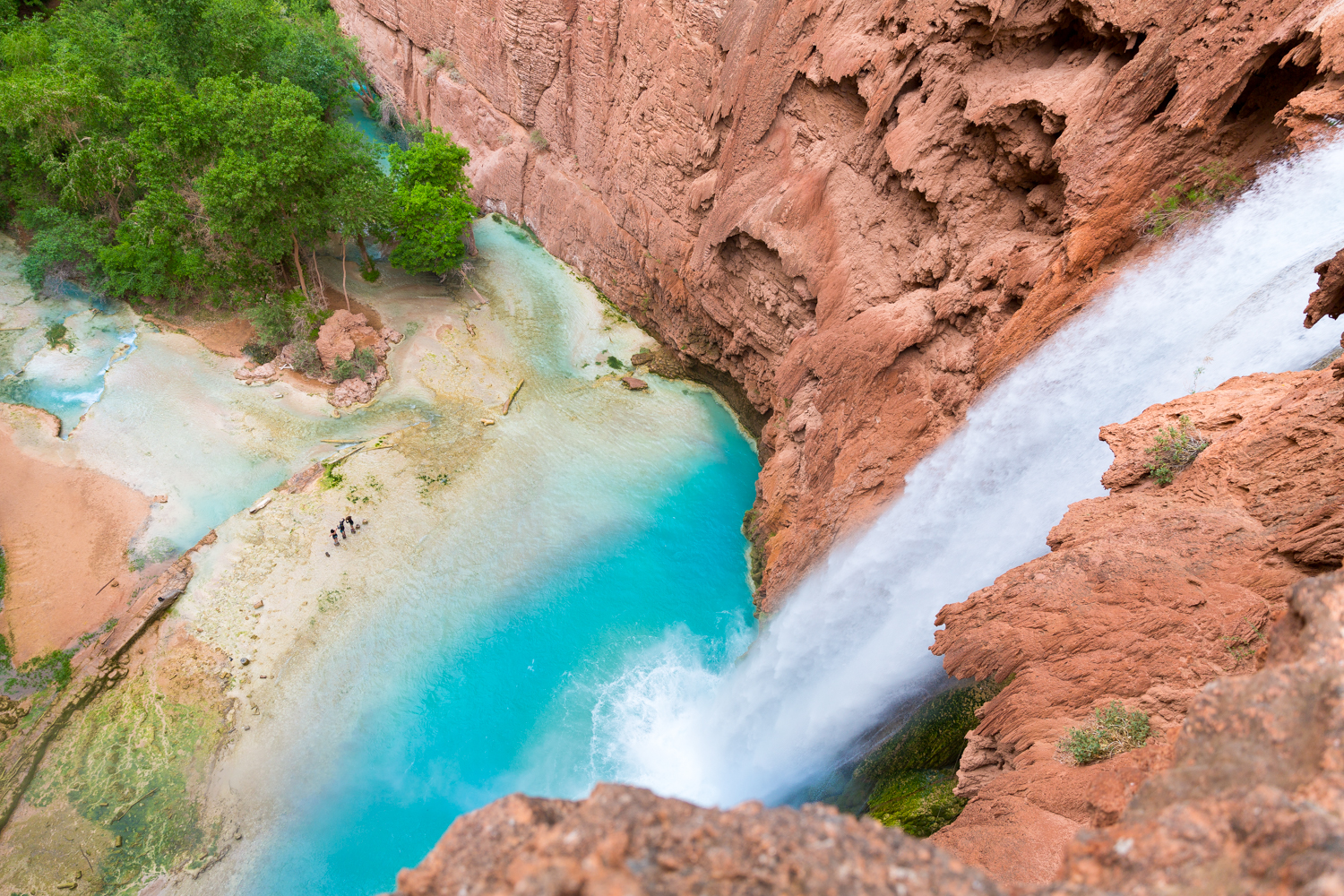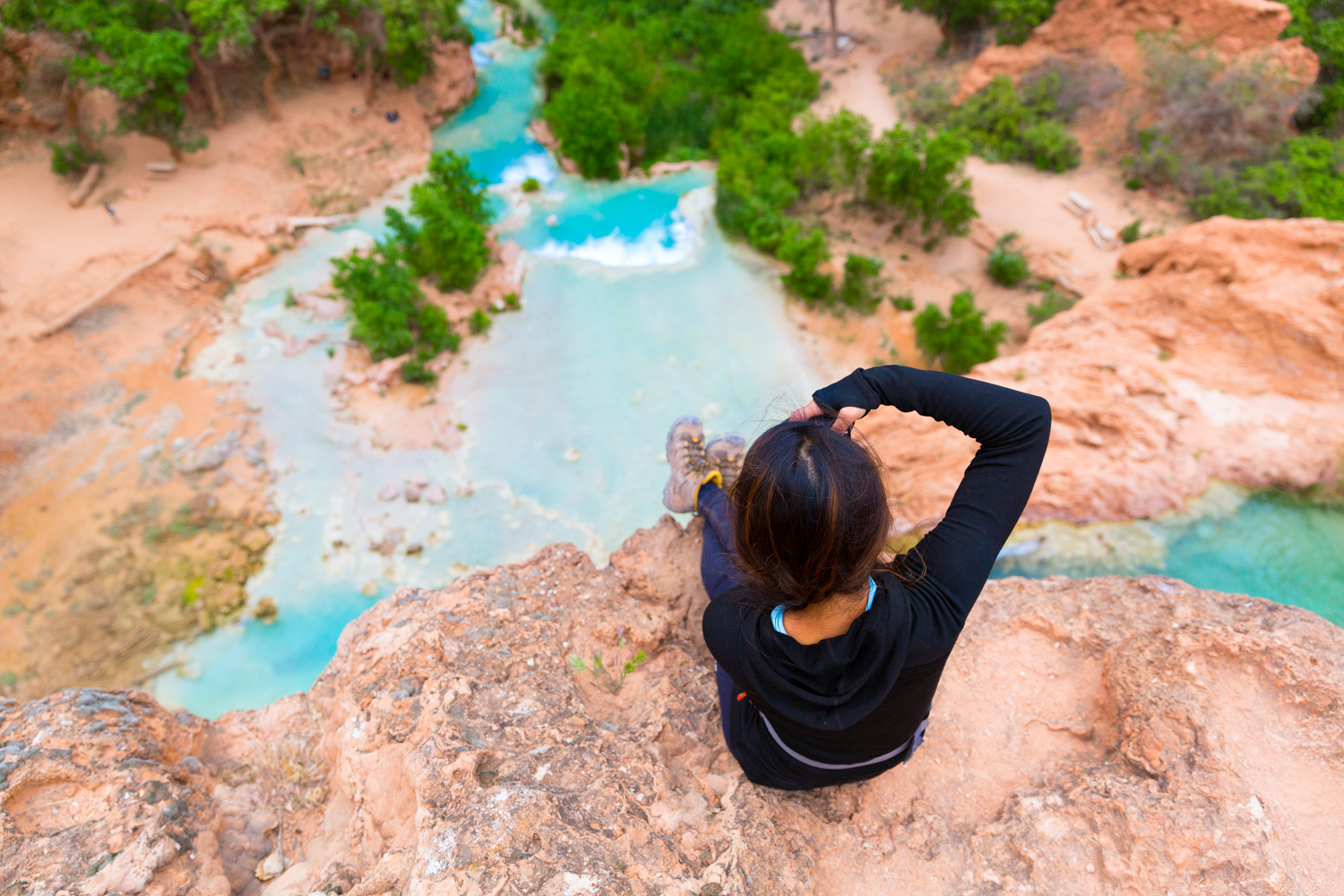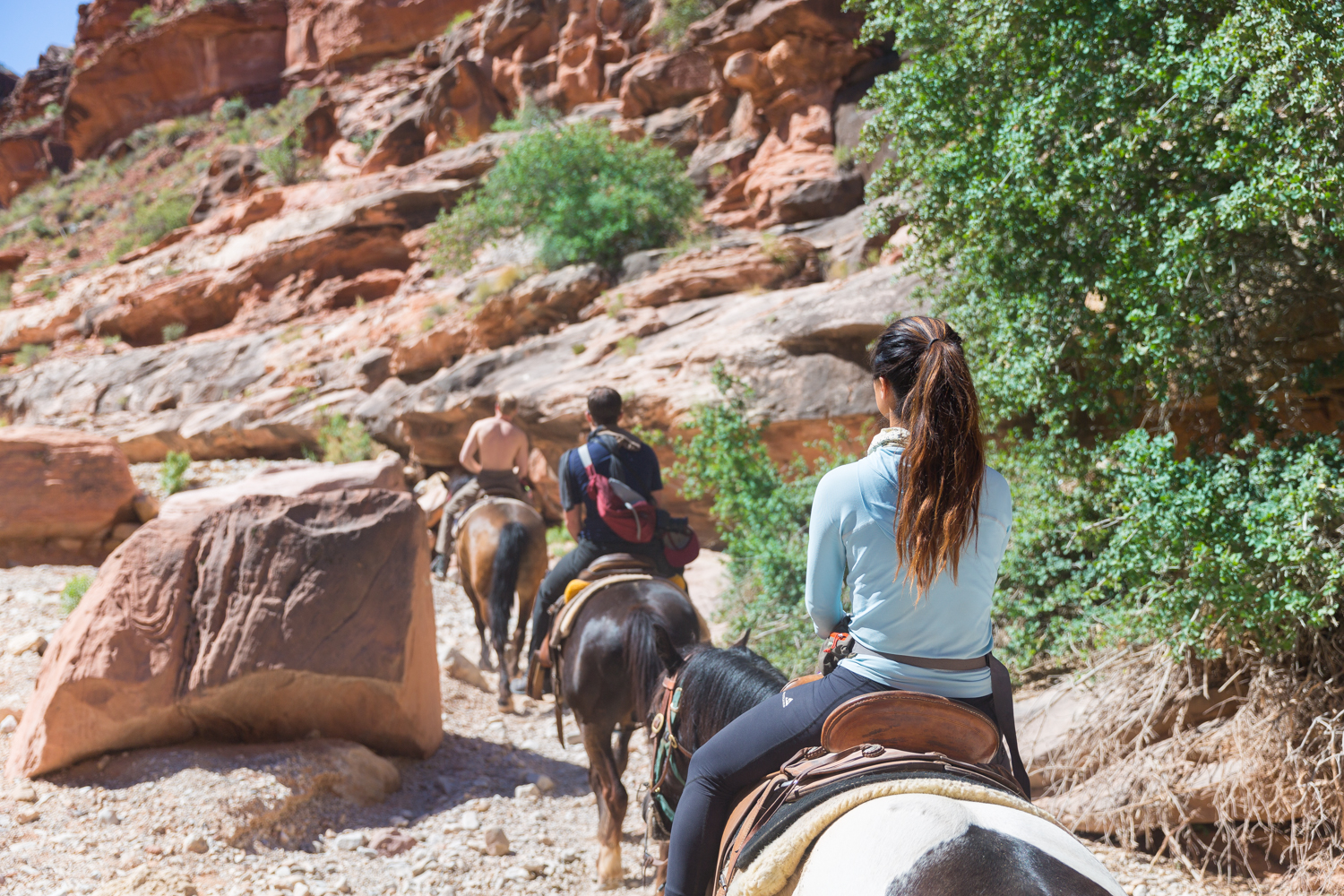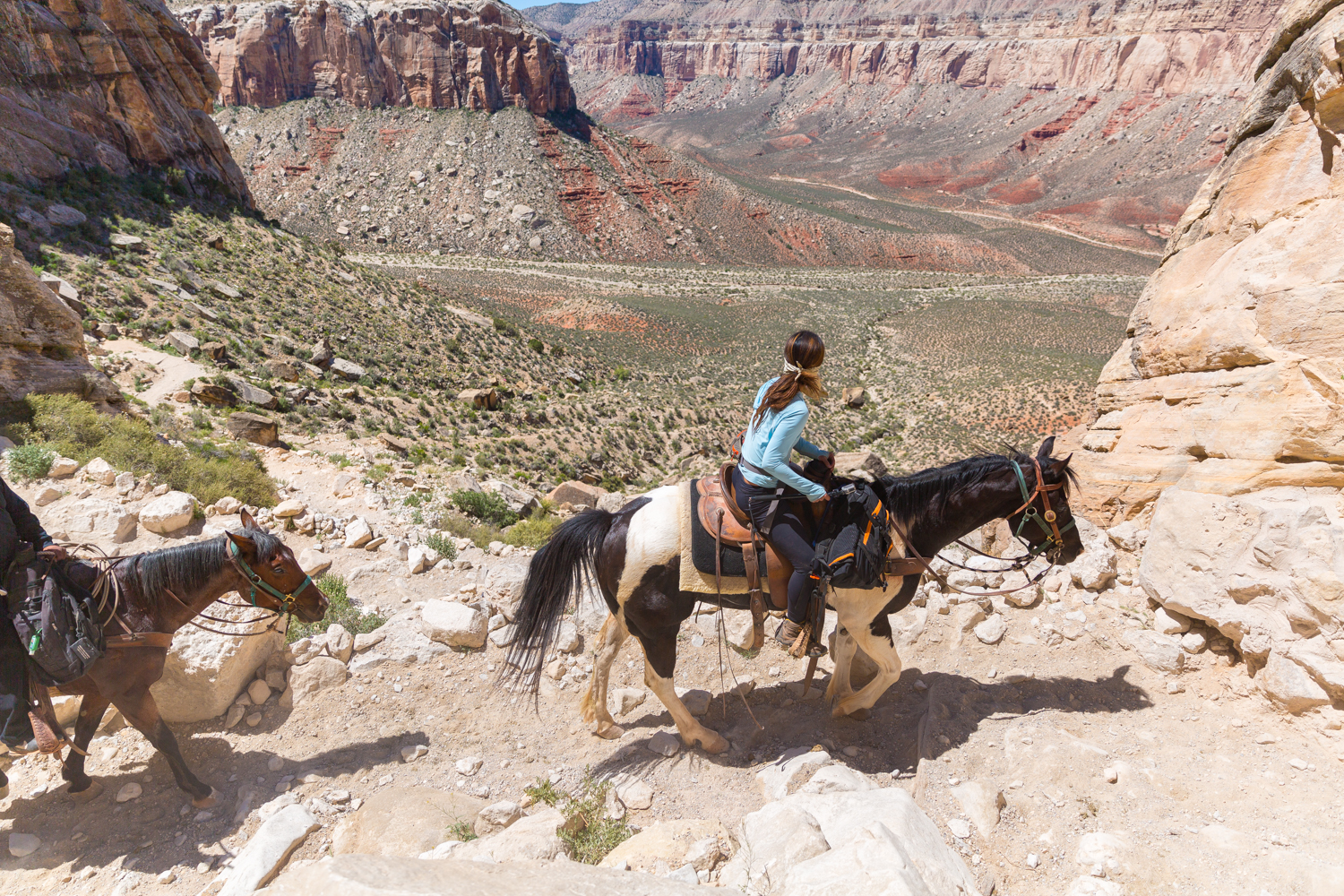Havasupai, Arizona
I could hear the wind as it whipped through our small cluster of tents, and carried what it could from the rim down to the canyon floor. It was 2am, and someone’s phone alarm had just gone off. I was snug in my sleeping bag, more than comfortable in my tent. I peeked out from my little cocoon and looked up at the stars, visible through the mesh fabric. I didn’t have my contacts in, so everything was pronounced. The stars were larger than life, blurry and brilliant with light. We were perched high above the south rim of the Grand Canyon floor, camped at the edge of an outcropping, suspended nearly 1,000 feet above the ground below. It was the middle of the night, and it was cold. I searched around until I had found the one outfit I would be wearing more or less everyday for the next four days, and stumbled out into darkness. Just as I did, the tent took flight.
I grabbed it by the frame, and tossed my bag inside to keep it in place. I didn’t have a lot of practice breaking camp, and the wind was an unexpected twist I hadn’t prepared for. Eventually, I had everything tucked into all the right places, and our group began descending from the trailhead. Our fearless leader, Mina Lee, spaced each of us out so that our headlights formed a trail of light down the winding path to the desert floor. I fell so many times I lost count, no doubt interrupting an otherwise flawless photo op. It was 10 miles to Havasupai, and we had four days of supplies and gear tucked into our packs.
More than 188,000 acres of broken plateau, steep canyons and red rock on the western edge of the Grand Canyon’s south rim comprise the territory of the Havasupai Reservation. The village of Supai, home of the Havasupai tribe, lies at the base of Havasu Canyon, a remote outpost that can only be reached by hiking, horses, or helicopter. Population: 208.
A steady stream of blue-green water led us to upper and lower Navajo Falls, then wound along the trail to a dramatic 100 foot drop-off; Havasu Falls. Havasu Falls is hard to describe. After 10 miles of dust and desert, you descend a short ways from the trail and straight into an explosion of turquoise that literally stops you in your tracks. And it is only the beginning. Because Havasupai is paradise. From that moment on, the water only gets bluer, the trails greener, everything is dreamier.
We had arrived ahead of the weekend crowd, and the creek side campgrounds were deserted. I can’t remember how many of us there were, maybe 20. We lined up our tents and strung up our hammocks along the banks to the water’s edge, where the creek plunged 200 feet below to the base of Mooney Falls. It was only ten in the morning and I was already exhausted from the previous 48 hours of driving, chasing light and barely sleeping. I passed out in my tent for at least a few hours, then wandered down to Havasu Falls to watch people I had just met throw themselves from a rocky ledge beneath a crazy high waterfall. I liked them already.
The next morning, I unzipped my tent and peered outside. Green trees, blue water. The sun was still behind the canyon walls, and the air was cool. It was barely six in the morning. I shuffled out of my sleeping bag and reached around for my contacts. I couldn’t bring myself to put on my shoes. I was on my fourth pair of hiking shoes in the past six months, and each pair had torn up my feet worst than the last. I counted seven open cuts, blisters and wounds between the two feet. I packed a small bag and walked barefoot over to the group, wondering how far I could manage without shoes. Nha and Victor, two people in our group who also happen to be registered nurses, intercepted me and bandaged both feet. I sat in total awe and appreciation, and realized I had a lot to learn before my 24-day backcountry trek through the Sierra Wilderness.
We descended down the steep stone trail that twisted left, right, and then down through a winding, narrow tunnel. The spray from Mooney Falls soaked through our clothes as we clung to the wet, rusty chains and wooden planks hammered into the red-rock canyon walls. One by one, we dropped to the sand from the suspended ladder at the base of Mooney and waded out into the turquoise blue water. It was becoming harder and harder to believe we were in the Grand Canyon, in the middle of a massive desert.
We regrouped near a series of small cascades and began walking through the stream, away from the campground and toward the confluence. All around us stood jade-colored trees and tall canyon walls. We climbed up onto a trail chiseled into the canyon wall, and inched along its edge single file, one by one. The trail wound downstream some three miles, crisscrossing the creek at times and narrowing into a footpath through a jungle-like cottonwood oasis of dense vegetation. The colors were so vibrant, everything was so green.
Three miles later, we reached Beaver falls. We were a group of cliff jumpers and adventure junkies, so together we explored the falls and its various departure points. We lingered at the edge of a 60-foot cliff, fixated on the stunning sapphire pool below. It was a long way down, and the water was so clear it was difficult to know how deep it really was. Mina made the trek down to test the water depth and shouted up at us. It was too shallow, just barely overhead.
From there, the group split. Half of our group turned back to the campground, and the rest of us continued toward the confluence, where the creek collides with the Colorado. It was another 4 miles deep into Narnia, and rain clouds hovered in the distance. My feet were in a wild amount of pain, but I was a full ten on the content scale.
Our group was smaller now, maybe 10 of us in all. It was late afternoon, and the clouds were turning a dark shade of grey, floating overhead. We had 12 miles to cover and just four hours of daylight. Collectively, we had zero sleeping bags and very little rain gear. We stopped briefly to assess our snack situation, and then decided to push on toward the Colorado.
Sometimes there was a trail, and sometimes we wandered back into the water and walked waist-deep through the blue. As we neared the confluence, the canyon walls rose into two massive towers of perfectly smooth rock, winding downstream in flawless tandem.
The canyon walls narrowed, and the water level rose. The cold water splashed up onto my chest as I gripped my camera overhead, and I focused my efforts on keeping my camera dry. I was wearing sandals, and the rocks underfoot were shifting with the current. I moved slowly, and carefully, until we had passed through the narrows and the sound of the rushing Colorado echoed off the canyon walls.
We spent an hour, maybe two, climbing around the banks of the confluence, eating almond butter and taking pictures. The sun was just beginning to set when we decided to hike back, and the clouds had eased up overhead. We took the upper trail, and peered down into the narrows as we bypassed them on the cliff. As we hiked, the long shadows spanning the canyon walls disappeared with the setting sun and everything grew dark. Before long, the canyon was dark as night as we plodded upstream with our pant legs rolled high, unable to see the water but sure that it was there. The only visible light was that of our headlamps, assembled into a small train of light moving slowly through the water.
We had covered nearly four miles when Mina stopped and pointed her headlamp toward a wooden ladder propped up against the canyon wall. Together, we climbed single-file high above the stream, and followed a trail to the base of Mooney Falls. It was late when we came crashing into camp; exhausted, hungry, too happy to care. I dove into my sleeping bag, and fell asleep to the sound of rushing water outside my tent, making its way to the Colorado in the night.
The next morning, there were tents everywhere. It was Saturday, and the weekend crowd had arrived. Our mini oasis by the stream was overrun with hammocks, tents and packed picnic tables. One passing camper told us there was an hour wait to descend the ladder to Mooney Falls. We passed the time at Navajo, and climbed around the top of Havasu. We tied up the Tentsile over the water, and hunted down hammock overhangs. At night we fired up our Jetboils and ate by the stream, sharing our dehydrated meals and tossing glow sticks across the table.
By Sunday night, the crowds had gone, and we had Havasupai to ourselves again. Most of us had only just met, but I knew when we said good-bye, it wouldn’t be for the last time. The next morning we rode out on horses, and decided the adventure wouldn’t end there. We piled our stuff into two cars, and hit the open road.


